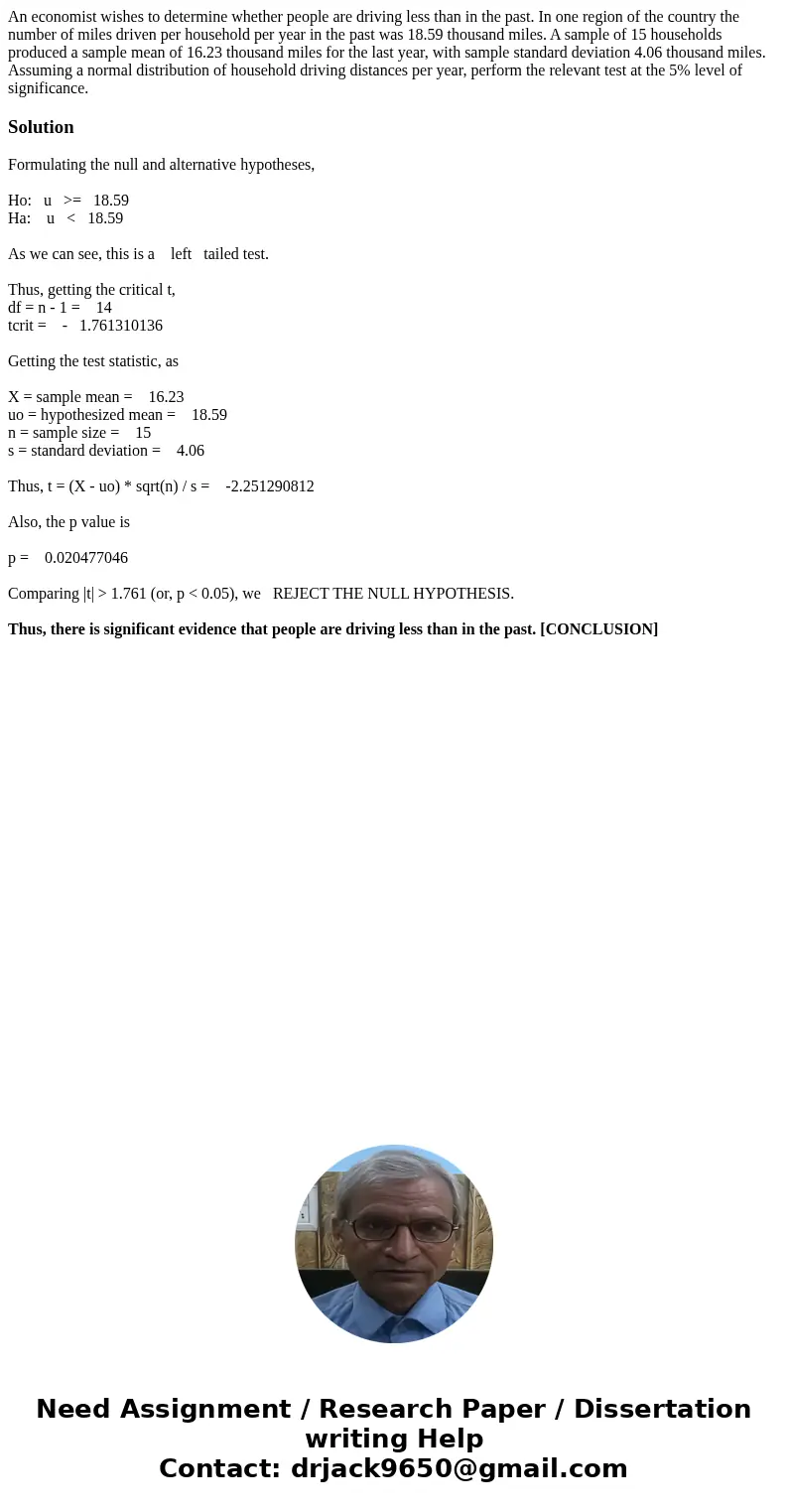An economist wishes to determine whether people are driving
An economist wishes to determine whether people are driving less than in the past. In one region of the country the number of miles driven per household per year in the past was 18.59 thousand miles. A sample of 15 households produced a sample mean of 16.23 thousand miles for the last year, with sample standard deviation 4.06 thousand miles. Assuming a normal distribution of household driving distances per year, perform the relevant test at the 5% level of significance.
Solution
Formulating the null and alternative hypotheses,
Ho: u >= 18.59
Ha: u < 18.59
As we can see, this is a left tailed test.
Thus, getting the critical t,
df = n - 1 = 14
tcrit = - 1.761310136
Getting the test statistic, as
X = sample mean = 16.23
uo = hypothesized mean = 18.59
n = sample size = 15
s = standard deviation = 4.06
Thus, t = (X - uo) * sqrt(n) / s = -2.251290812
Also, the p value is
p = 0.020477046
Comparing |t| > 1.761 (or, p < 0.05), we REJECT THE NULL HYPOTHESIS.
Thus, there is significant evidence that people are driving less than in the past. [CONCLUSION]

 Homework Sourse
Homework Sourse